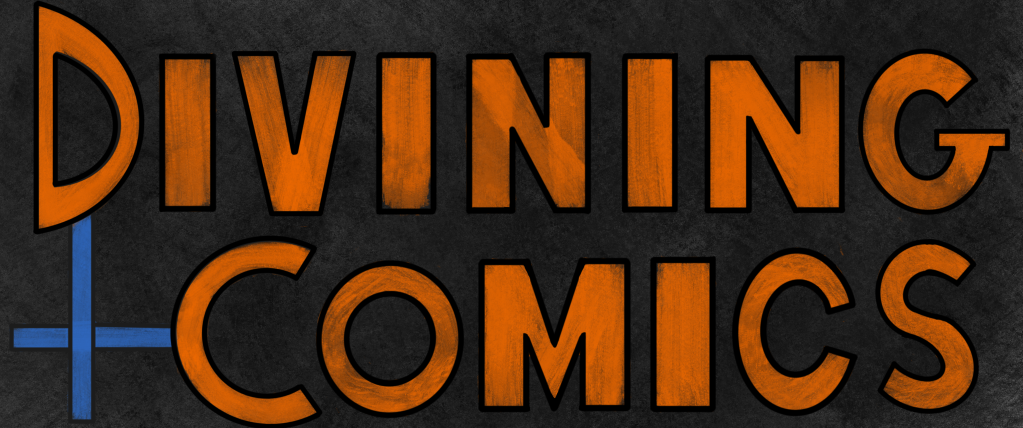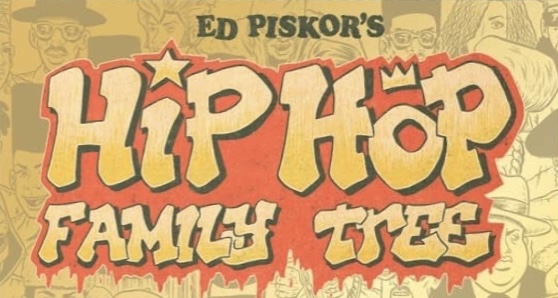Hip Hop Family Tree Book One and Drawing Sound
Generally speaking, the one artistic magic unattainable in comics is sound. An artist can draw whatever they want and in whatever technique they’d like, but only the most experimental books have any audio more complex than a Spotify playlist. If an artist wants the reader to hear a sound in their mind, they have to find a way to draw it. As a result, several shorthands for common sounds developed. The most common is the word balloon, a way to depict dialog or narration in a visual form. Second to that is the sound effect, which is essentially stylized onomatopoeia. These are magical shorthands, which have no referent in reality but through repetition have become commonplace in the comic form. It is a type of alchemy, the transmutation of sound into image.
But how do you depict music? Rhythm and melody? Most comics simply don’t if they can get away with it. That isn’t always possible. If music is the main subject of the book, an artist will have to get creative with how they depict it. Real wizards have multiple spells in their grimoire to depict the diversity of sound that exists. Ed Piskor’s Hip Hop Family Tree, depicting the formative early years of disk jockeying and rapping, does just that. Let’s look at some of the different ways Piskor accomplishes this.
We’ll start with the many different variants on the classic speech bubble Piskor devises. Once the common spell of a white oval and tail pointing to the sound source was developed, there was no reason to stick solely to written words in the bubble, as words aren’t the only sounds we hear. From the very beginning, Piskor uses music notes to show the sound coming from the radio. Observe that the notes don’t actually correlate to a particular rhythm or even a melody, lacking the musical staff. It’s just a shorthand for music, almost like an emoji.


Similarly, a few times the only thing in the speech bubble is a giant question mark. This isn’t supposed to correlate to any sound in specific, but a general sense of confusion. Instead of writing out “Eh?” or “Huh?” or even “Wha-wha-wha-what?”, a simple question mark accomplishes the same effect much simpler. Basically the same effect is accomplished with exclamation marks as symbols for anger. Think about that for a second. Music notes, question and exclamation marks, they don’t have any inherent meaning. The extent to which they function as symbols is entirely based on the meaning that we as humans collectively give to them. That’s pretty sweet, and if that ain’t magic, I don’t know what is.

During a later rap battle scene, the crowd noise becomes an important element in the story alchemy. It gets to the point where almost every single panel uses the call and response differently. Starting simply from the ending, the results are determined by the volume of the crowd. This is accomplished by having the winning crew, Fantastic, in a much larger font than Cold Crush, the losers. Because font is a visual element, changing how it looks changes how it is interpreted. Simple enough, right? Well, it’s about to get more complicated.


Look at this page, Busy Bee Starski battle rapping Cool Moe Dee. It feels like almost half the page or more is word balloons. Piskor is telling us to pay attention to them. This makes sense, as a rap battle is all about the words themselves. What I want to draw your attention to is all of the different ways the crowd response is depicted on just this one page.
Starting with the top two rows, we get the typical call and response. Piskor prioritizes Starski’s speech bubbles by keeping them the off-white of the page. This empty space draws the eye, a magnetic pull of contrasting colors. The audience, by contrast, speaks in a light red, different from the red the rest of the page is colored, but not by much. Imagine witnessing this scene in real life and you might realize the trick being played here. Piskor is using the color of the balloons to reflect the loudness of the speech. Starski is on the mic, and his voice will carry. The shoutings of the crowd, on the other hand, will be quieter and blend into the background, metaphorically rather than literally as drawn.

The spacing of these balloons also communicates something. You read word balloons starting at the top left and move right then down. Each balloon, then, happens at a slightly different point in time, even though the drawing itself is only one moment in time. Some of the crowd response balloons are attached to Starski’s balloons, emphasizing the call and response nature of his raps. It also lets the reader know what is being responded to. Instead of a random mixture of nos and yeses, the balloon placement attaches them to a specific moment. Taken together, these speech bubbles are able to create the illusion of volume and sequence in a medium that is entirely visual.

What other elements of sound can be alchemically transmuted into visual form? Take a look at the first two panels of row three. They are showing the crowd unified in their answer, but do so in different ways. The first panel has the crowd shouting “Noonay” in seemingly perfect unison. There is one bubble with many tails, implying the many speakers coming together to form one voice. You can find a similar effect later in the book, when some singers are performing in harmony. I would even go so far as to say that the synchronized “noonay” is probably in step with the rhythm of the beat.

By contrast, the next panel has many word balloons all overlapping but saying the same thing. Everyone knows the answer to where we work things out is at the alps, but they don’t all know when to say it. That cacophany is depicting visually. This matches a couple of moments later in the series, like when someone’s speech is interrupted by a word balloon overlapping it. Finally, the same effect is used by Big Bank Hank. Here, he is rapping over a cassette tape of someone else’s rapping. Thus, his word balloon is placed overlapping the word balloon of the tape player. This visual metaphor is especially potent, because Hank would get into some trouble for stealing the rhymes of better rappers.




To wrap up this section, here are a few other miscelaneous tricks Piskor uses to visually depict the abstractions of sound. First, he’ll often bold the rhyming words of a rap in order to cue the reader in to the rhythm of the rhymes.
Second, he will have the word bubbles come from different sources. Here, while one tail points to the rapper himself, the other comes from the speaker. This emphasizes the performative nature of rap, and could be a way of depicting the difference in sound.


Finally, there is whatever this is. Just as speech bubbles don’t have to contain words, they don’t even need to contain commonly understood symbols. The caption box tells us that the rap was a brutal beatdown, and the bubble with a mess of squiggle inside depicts a brutal beatdown.
Of course, word balloons aren’t the only way comics classically transmute sound into symbol. This brings us to the classic sound effect. If you’ve ever seen an article about comics being with “Biff Bang Pow”, then you know something about the sound effect. It is an onomatopoeia that is drawn in blockier letters than the word balloon.
As mentioned in my article on Void Rivals, letterer Hassan Otsmane-Elhaou notes that, presumably, there are many sounds in a comic that are simply not depicted. There aren’t sound effects for every crumple of a shirt or scuffle of a boot. The sound effect is there to let the reader know this sound in particular is important. This can be observed in the simple and classic sound effects below. The zigga zigga of the record scratching is the whole point of the panel, so it makes sense to actually write it out on the page. Similarly, Jocko Hendersonson’s “snap snap snap”ing emphasizes the rhythm of his words. These aren’t just any sounds, but important ones.


These sound effects can be changed to emphasize certain qualities of the sounds. While technically a word balloon, the pops and crackles of a cheap radio are given visual heft like a sound effect. In addition to simply depicting the onomatopoeia in letters, an essence of the sound was conveyed in how the letters themselves were drawn. Similarly, the sound of a character vomiting is drawn in vomit colors, and given a liquid quality. Gross, but effective.


I’ve saved Piskor’s most unique innovation for last. Aside from the manipulations of word balloons and text, how can an artist draw the loudness of a DJ set? Piskor tries something new, and he labels this experiment “color vibrations.” Almost like an old-school red and blue 3D image, he duplicates the image and offsets it slightly. The second image is even a colored a bit more blue and the opacity is increased. This creates an illusion of shaking or vibrating, to match the large sound of the giant speakers.

On the following page, the Brothers Disco accomplish a similar effect with a DIY rig. Only, it’s a bit more. Piskor writes in the annotations that “this needed to be louder, so the registration is even more removed from the actual ink lines.” The transmutation of image into volume is complete.

As comics continue to grow, innovative artists like Piskor will find even more ways to depict sound visually. What could be seen as a weakness or limitation of the medium actually generates the space for creativity and experimentation. Learning the art of transmutation, of how to magically transform sound into drawing, will help you continue down your journey of Divining Comics.
If you haven’t already, consider supporting this work at ko-fi.com/spikestonehand. There, you can leave a tip or buy Zine versions of these articles. Doing this helps keep the website going. Follow me on Twitter, Instagram, and Bluesky.


Leave a comment